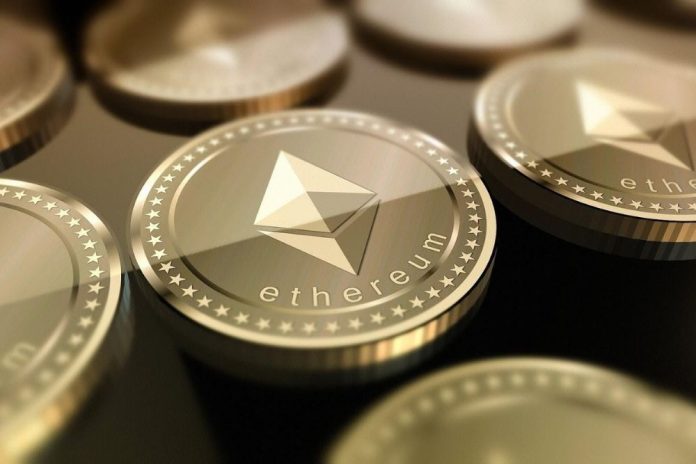Ethereum introduced smart contracts and dApps in the blockchain ecosystem, and it’s been the leading player in this field. But, as adoption grew, it was clear that Ethereum couldn’t handle as many transactions as it needed with its throughput of around 14 transactions per second. During higher demand, gas fees rose, and settlement times became increasingly long.
There are many improvement proposals, and developers introduced a series of upgrades to solve this issue. However, the current consensus is that Layer-2 protocols are the solution to Ethereum’s scalability problem. If you want to swap BTC to ETH and participate in the Ethereum ecosystem, you should learn about Layer-2 solutions.
Layer-2 projects operate as a second blockchain on top of Ethereum. They process transactions off-chain and then settle the final result on the main chain. This improves transaction times and costs but maintains Ethereum’s security and decentralization.
Ethereum Layer-2 Solutions: Types and Overview
Layer 2 is an umbrella term to encompass different technologies, including rollups, sidechains, or state channels. Layer 2 helps scale Ethereum by loading off transaction processing from the main chain while maintaining its security infrastructure.
- Rollups bundle transactions to process them off-chain and add the resulting data to Ethereum. Rollups can be zero-knowledge or optimistic, depending on how to approach verification.
- State channels allow the parties involved to deposit the funds in a smart contract, and they can make as many transactions as they want on it. Only the final result is settled on the main chain. Funds are locked in a multisig smart contract.
- Plasma chains act as child chains from Ethereum. They can be customized to serve specific purposes, like for businesses or communities. Settlement on the main network takes a few days, to avoid the risk of fake transactions.
- Validium ensures transaction validity with ZK proofs keeping data on-chain.
Ethereum Layer-2 vs. Layer-1: What’s the Difference?
To understand Layer-2 solutions, it’s important to learn what sets them apart from Layer-1. Simply put, Layer-1 refers to the main Ethereum chain we all know and use. With the rise of NFT and DeFi, the network struggled with congestion. ETH ETF is now putting more buying pressure on Ethereum, although ETF traders don’t interact directly with the token.
Layer-2 protocols run on top of this main chain and benefit from Ethereum’s security and decentralization (because transactions are ultimately settled there). However, since they don’t operate directly on Ethereum, Layer-2 chains are not bound by its limitations. Therefore, they can process more transactions per second, lowering time to finality and fees.
Top 3 Benefits of Using Ethereum Layer-2
Most Ethereum developers agree that instead of upgrading the main chain to achieve higher throughput, it’s best to operate Layer-2 chains to scale Ethereum. There are many available options, and core Ethereum developers believe this can benefit scalability as a whole. The more alternatives in the market, the more options for traders and dApps. In the end, the different Layer-2 chains serve the myriad of DeFi protocols and NFT marketplaces that keep processing thousands of transactions daily.
Let’s expand more on the benefits of using Layer-2 solutions.
Lower Transaction Fees
On the main chain, transaction fees are around $1. Sometimes, when demand increases, it can go over $10. Some Layer-2 chains offer fees as low as $0.04-$0.15. This still represents 85% less than the average Ethereum transaction.
While other Ethereum alternatives feature much lower fees, it usually comes at the risk of centralization or network stability. Networks can’t achieve scalability, security, and decentralization at the same time — the so-called blockchain Trilemma. In all cases, projects must sacrifice one of these aspects. For Ethereum developers, while this chain sacrifices scalability, it solves the problem with Layer-2.
Faster Transactions
In DeFi protocols, and trading in general, timing is key. A couple of seconds can make the difference between a good trade and a great one. The main Ethereum chain takes around 15 seconds to validate transactions. Layer-2 chains can reach near-instant transaction times. Settlement on the main chain, of course, can take days, but it will not affect your balance if all transactions are legitimate.
Considering there are over $47 billion locked in DeFi smart contracts in Ethereum, it’s clear that we need solutions to provide instant transactions and higher throughputs.
Increased Scalability
The scalability is, along with transaction speed, a crucial feature for DeFi and NFT marketplaces. Layer-2 solutions offer varying throughput values, depending on the particular characteristics of each. But in general, they can process over 1,000 tps. Arbitrum, an Optimistic Rollup, can process up to 40 thousand tps, with average fees of around 2 cents. ImmutableX, a rollup using the ZK model, can process around 9 thousand tps.
This throughput is achieved without compromising security or decentralization because all transactions are ultimately settled on the Ethereum blockchain.
Investing in Ethereum: What Beginners Should Know
If you’re new to the Ethereum ecosystem, so many chains and protocols can scare you away. However, the different Layer-2 solutions are worth exploring to understand their values and risks.
This sector of blockchain is still evolving, and as a new investor, it can be profitable to learn the most reputable Layer-2 projects. After you buy Ethereum, these other tokens and chains can be worthy additions to your portfolio as long as you acknowledge their pros and cons.
Disclaimer: This content is meant to inform and should not be considered financial advice. The views expressed in this article may include the author’s personal opinions and do not represent Times Tabloid’s opinion. Readers are urged to do in-depth research before making any investment decisions. Any action taken by the reader is strictly at their own risk. Times Tabloid is not responsible for any financial losses.


